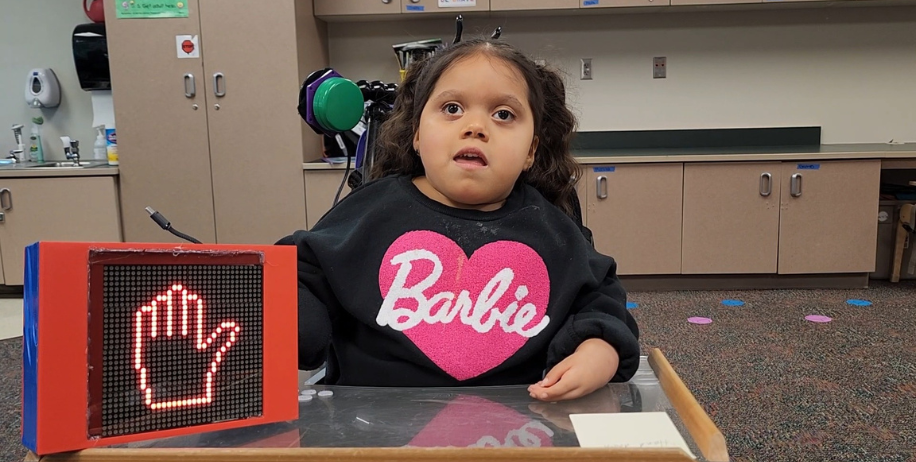Ellen Hopkins Elementary 1st grader Amarah Ramirez experiences limited mobility in her arms, making it difficult for her to raise her hand in class. Renee Wolf, a special educator at Hopkins, was hoping to find a way to help Amarah do just that—so she reached out to Moorhead High School’s Spudnik Robotics team to see if they could help.
Last year, the students used LED lights in their competition robot, and now they are applying that experience to design a custom device for Amarah. Robotics coach Matthew Craig met with Renee to discuss her vision for the project, and the team quickly began brainstorming.
Four students took on the challenge of helping Amarah: one focused on the 3D design of the box, two worked on integrating the LED hand display and one handled programming. They shared that the device is set up so Amarah can tap a button with her head to raise the LED hand, then tap again to lower it.
A major part of robotics is adapting and problem-solving to make things work even better. The students are completing their first version of the device and have already identified improvements they would like to make for the final product. Their adjustments include rounding the corners, incorporating a sound to indicate when the hand is raised and changing the color of the hand to Amarah’s chosen color, blue.
Coach Craig notes that this project feels different from the team's usual robotics work. “It's robotics, and when we're working on the robot it feels removed from real life. But the skills that the students practice applying in robotics are useful for everyday things too. If you ask kids why they do robotics, many will say that it's because of the other people involved in robotics. And this is sort of an extension of that. It's doing a robotics thing because it is for another person.”
One student working on the project shared that this experience has been meaningful for him because it is helping a younger student succeed. “Everyone should be able to participate in class and helping to make that possible feels rewarding”.
The project to help Amarah also shows other students that robotics can make a real difference and help people in tangible ways. Typically, Spudnik works on one large project throughout the year. They have to wait to see the results until the competition in the spring. It has been exciting for the team to see immediate results and watch their efforts come to life.
Based on how this project delivers the intended outcomes for Amarah, it could serve as something of a pilot for Spudnik to engineer one or two products each month for students and peers in need across MAPS. Coming together to help others and using a shared passion to create something meaningful is what MAPS is all about.

